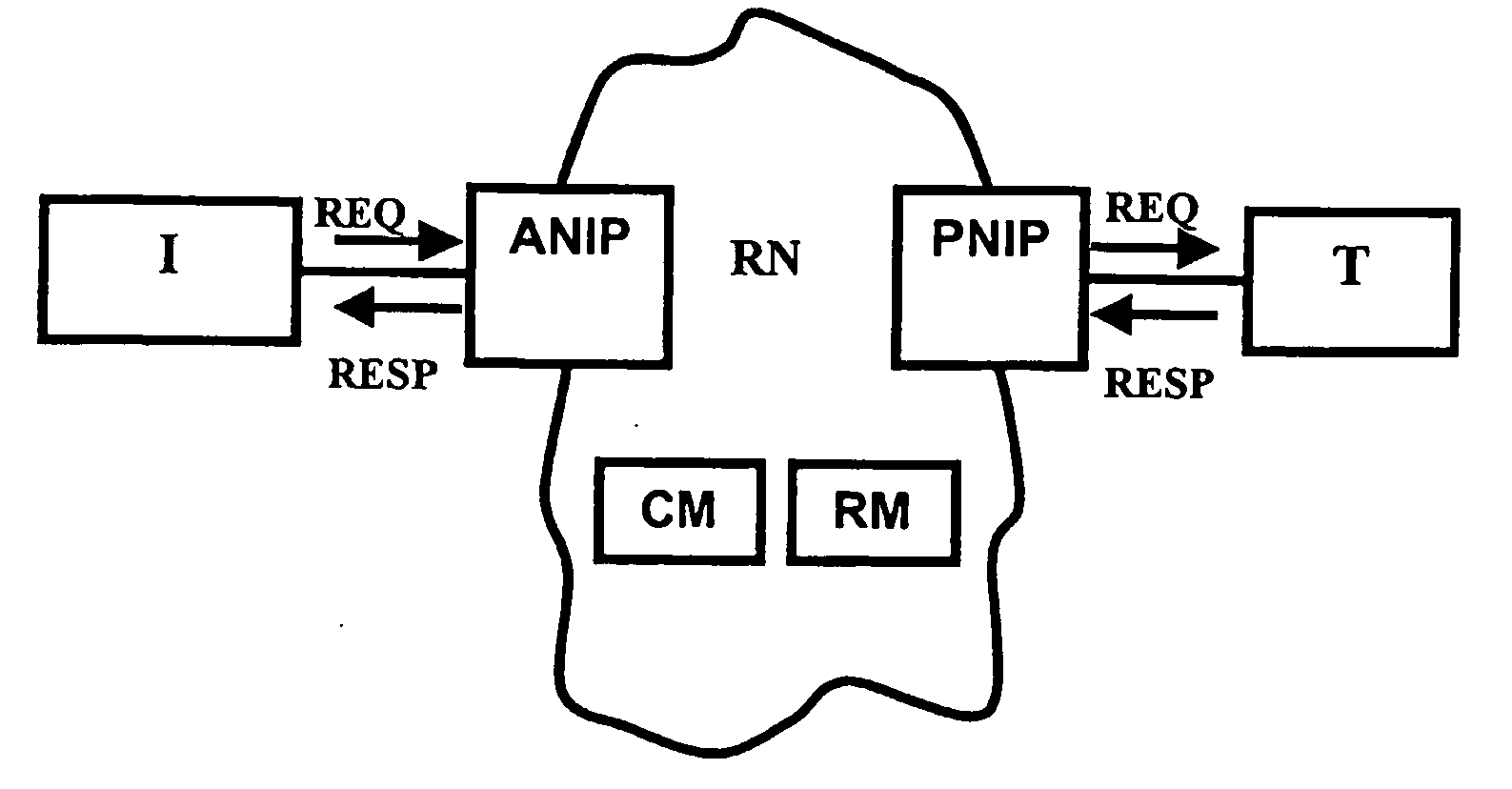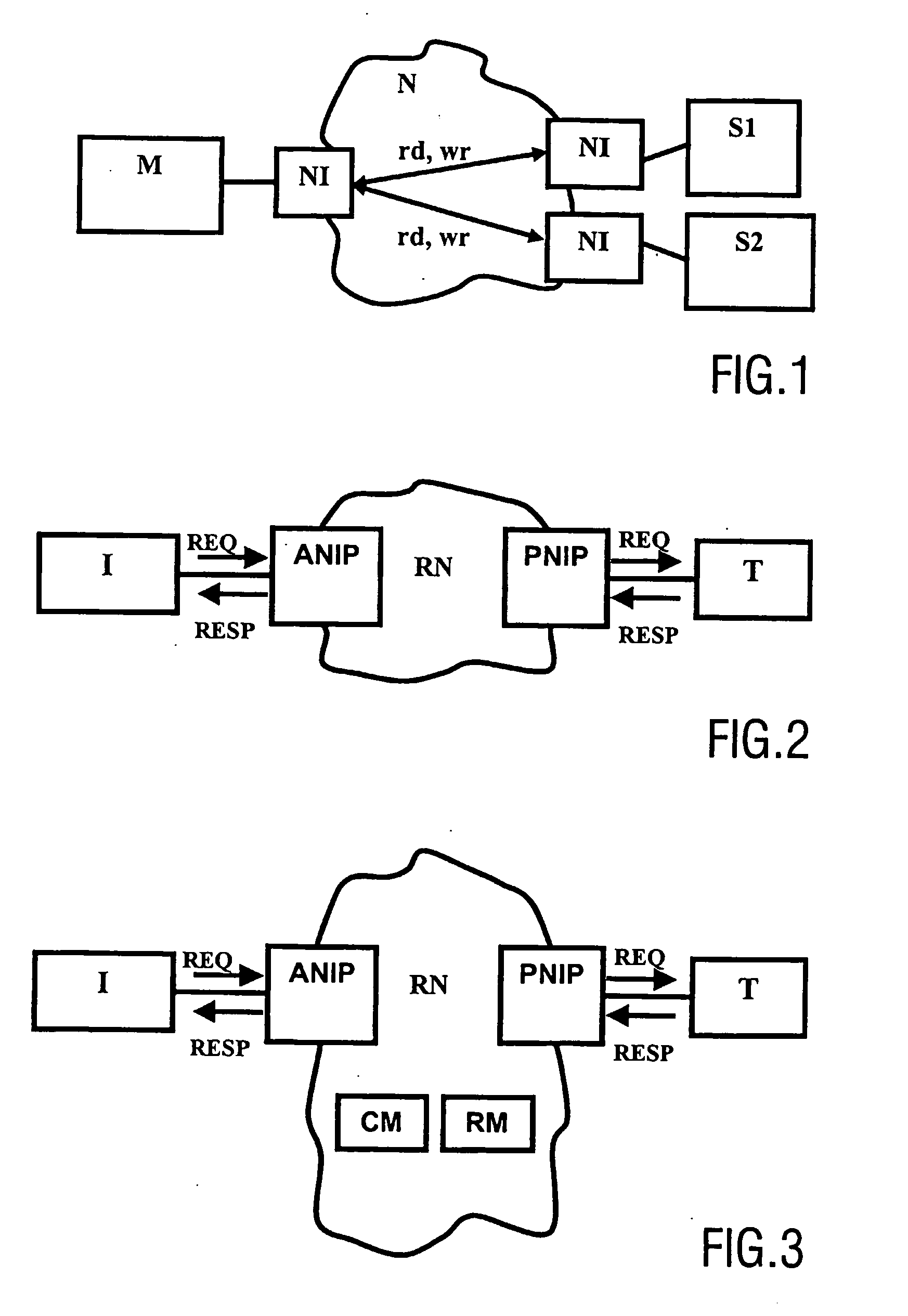Integrated circuit and method for establishing transactions
- Summary
- Abstract
- Description
- Claims
- Application Information
AI Technical Summary
Benefits of technology
Problems solved by technology
Method used
Image
Examples
first embodiment
[0051]FIG. 1 shows a System on chip according to a The system comprises a master module M, two slave modules S1, S2. Each module is connected to a network N via a network interface NI, respectively. The network interfaces NI are used as interfaces between the master and slave modules M, S1, S2 and network N. The network interfaces NI are provided to manage the communication of the respective modules and the network N, so that the modules can perform their dedicated operation without having to deal with communication with the network or other modules. The network interfaces NI can send requests such as read rd and write wr between each other over the network.
second embodiment
[0052]FIG. 2 shows a system on chip accoding to a The system comprises two modules, namely an initiator I and a target T, a router network RN, and two network interfaces ANIP, PNIP between the modules and the router network RN. The network interfaces provide two network interfaces ports NIP (one request and one response port) through which the modules communicate with the router network RN or other modules via the router network RN. The network interface has one or more ports where modules can be connected. Two different type of ports are available, namely the active network interface port ANIP, which is connected to masters and the passive network interface port PNIP, which is connected to slave. The communication between the initiator module I and the target module T is based on request-response transactions, where the master, i.e. the initiator module L initiates a transaction by placing a request, possibly with some data or required connection properties. The request REQ is del...
PUM
 Login to View More
Login to View More Abstract
Description
Claims
Application Information
 Login to View More
Login to View More - R&D
- Intellectual Property
- Life Sciences
- Materials
- Tech Scout
- Unparalleled Data Quality
- Higher Quality Content
- 60% Fewer Hallucinations
Browse by: Latest US Patents, China's latest patents, Technical Efficacy Thesaurus, Application Domain, Technology Topic, Popular Technical Reports.
© 2025 PatSnap. All rights reserved.Legal|Privacy policy|Modern Slavery Act Transparency Statement|Sitemap|About US| Contact US: help@patsnap.com


